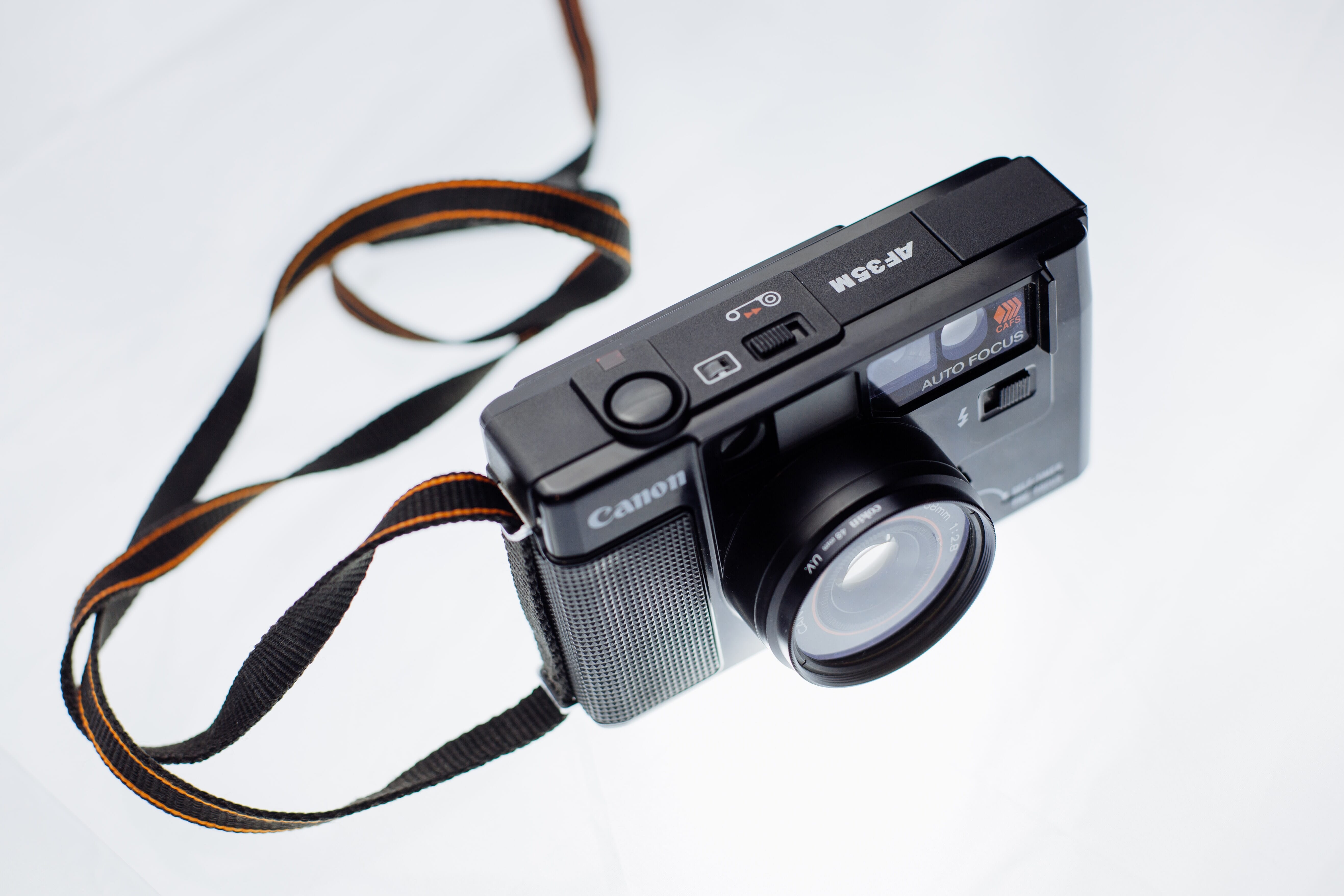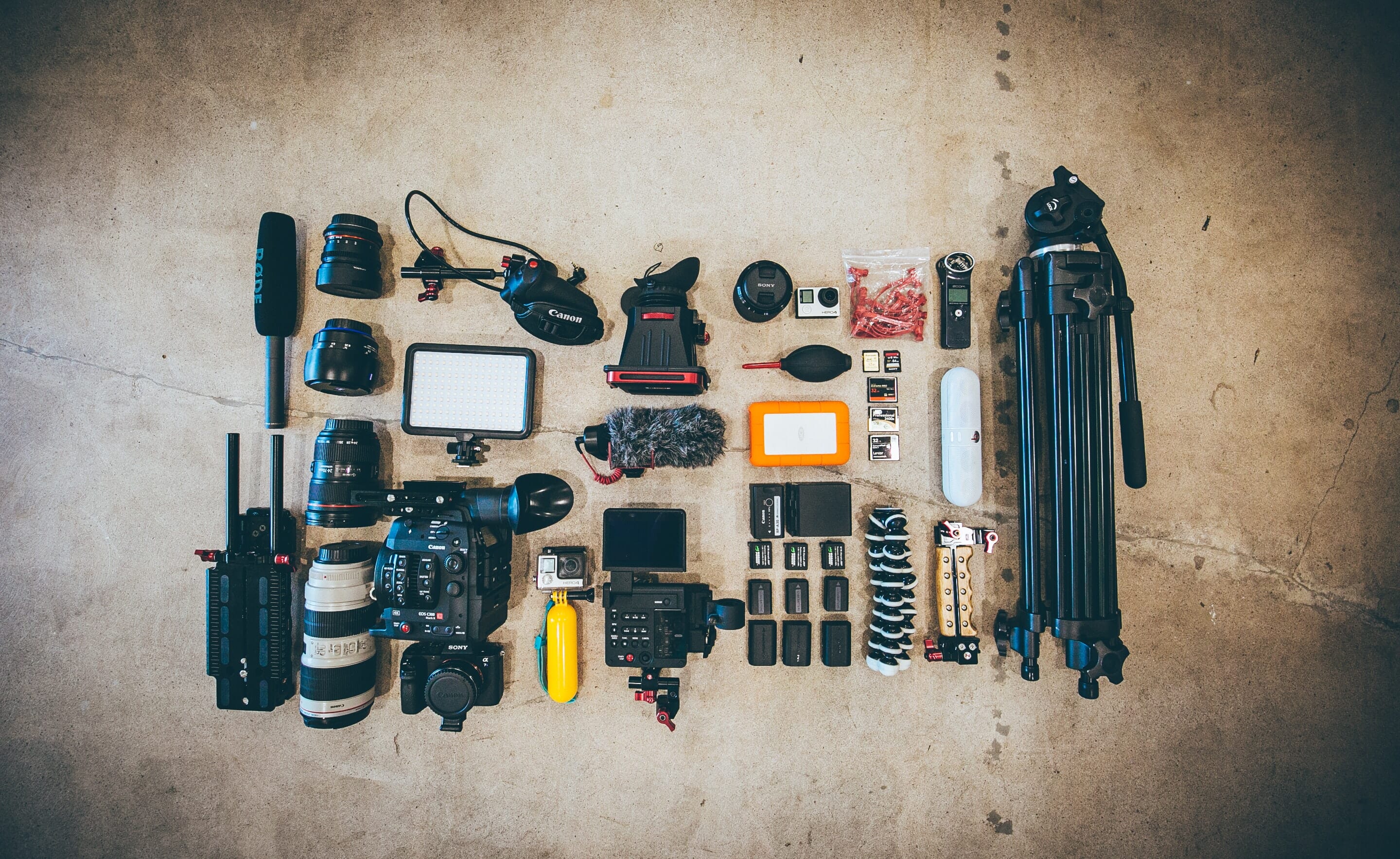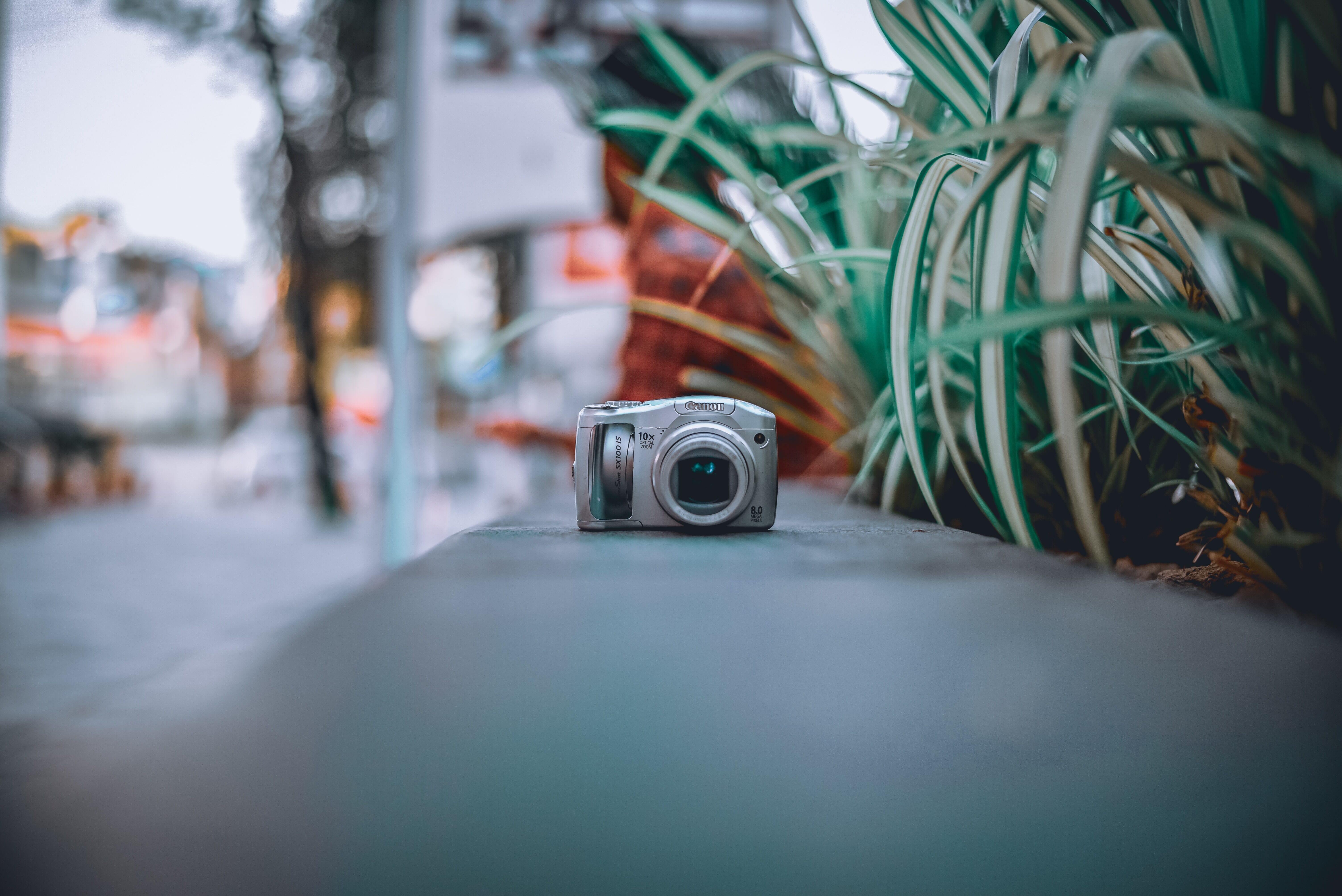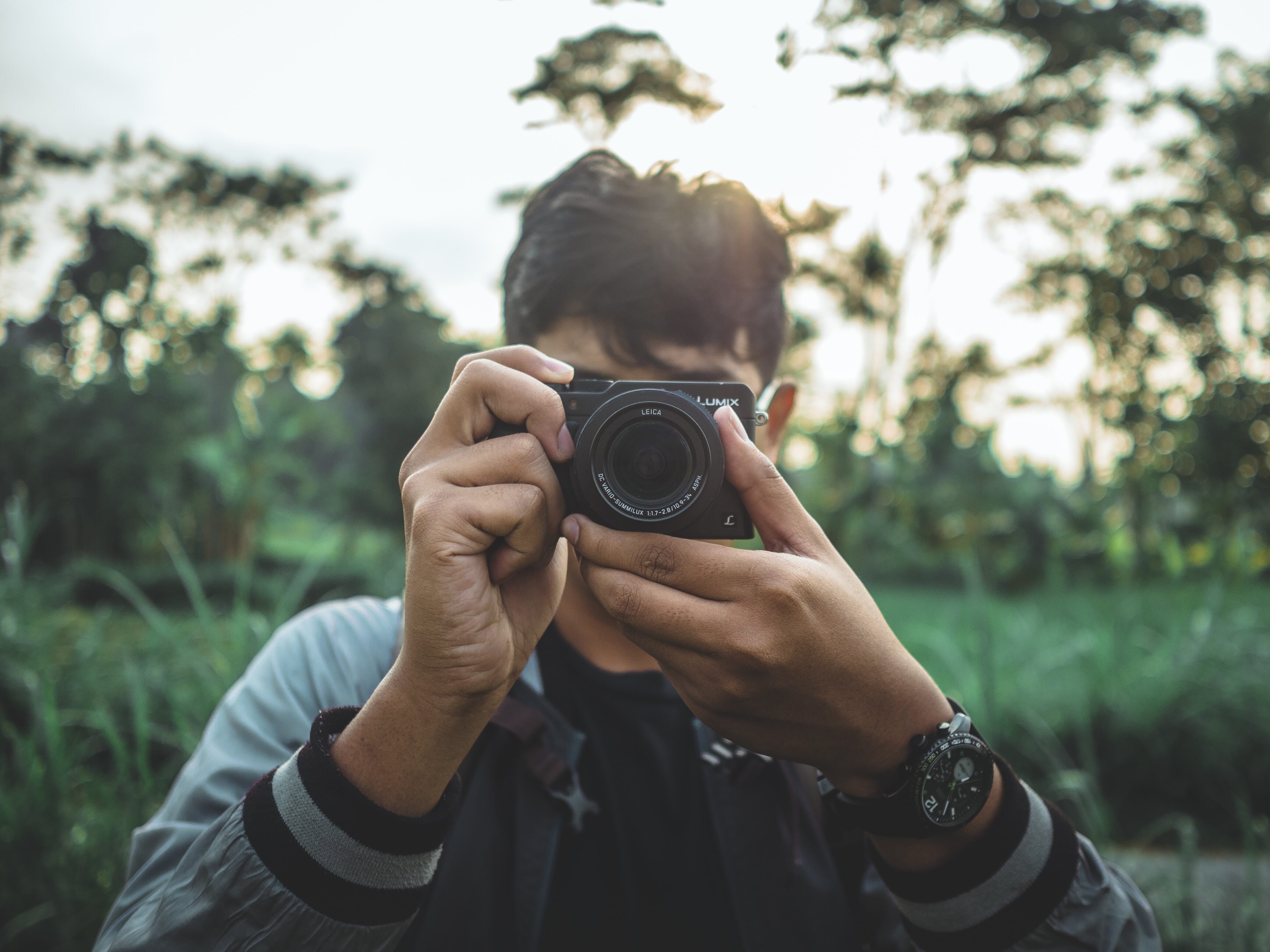If you’re struggling to decide between DSLR vs point and shoot cameras, then you’ve come to the right place.
As a professional photographer, I’ve spent hundreds of hours working with both DSLRs and point and shoot cameras. And I’m ready to share with you my findings, including:
Who should use a DSLR (and why).
Who should use a point and shoot camera (and why).

And the advantages and disadvantages of these two camera types.
By the time you’re done, you’ll know exactly which type of camera is best for you.
Let’s dive right in.
DSLR vs Point and Shoot:
The Advantages of a DSLR
In this section, I’m going to take a look at reasons you should choose a DSLR over a point and shoot camera, starting with:
DSLRs Give Better Image Quality
I’m just going to come right out and say it:
On average, DSLR images look better than point and shoot images.
This is due to a combination of factors, but the biggest one is noise.
You see, noise is patches and dots of inaccurate colors and lightness values that you’ll find in some images, especially if you zoom in.
It looks like this:

Do you see how the image above looks like it was covered with a generous helping of unwanted specks?
That’s noise.
And, as you’ve probably gathered, noise looks terrible.
Now, noise is most noticeable in low-light situations, where you’re photographing indoors or at night. And you can find low-light noise in both DSLR and point and shoot files (though it tends to be far worse with point and shoot models).
Related Posts
But point and shoot cameras can display noise even in well-lit shots, which destroys resolution and cuts down on the amount of detail you can see in an image.
I don’t mean to say that you can’t get great photos on a point and shoot camera. Nor is it true that every photo taken by a DSLR is better than every photo taken with a point and shoot camera.
But your ability to capture stunning images is going to be much enhanced on a DSLR, because you won’t have to deal with extreme amounts of noise, either at night or in great light.
(Note that any sensor noise is going to be even more obvious on a large print, or after you edit your photos. So if you plan on taking your work to the next level with printing or editing, the small sensor is going to be even more of an issue.)
So if you’re set on getting the best possible images – the kind you can be proud of for years to come – a DSLR is the way to go.
DSLRs Offer Optical Viewfinders
An optical viewfinder is a direct feed through the camera lens. It lets you see exactly what your camera is seeing, just before you take a photo.
And every single DSLR offers an optical viewfinder.

Most point and shoot cameras, on the other hand, allow you to preview a photo through the rear LCD – but there’s no optical viewfinder, and no way of looking through the camera lens as you take the photo.
(Point and shoots do occasionally include some sort of artificial optical viewfinder, but they won’t show you what the camera sees, and aren’t especially useful.)
Now, working with an LCD image preview isn’t bad in certain situations. You can use it to create nice compositions. And you can use it to check your focus.
But without an optical viewfinder, you’ll struggle to follow moving subjects. You’ll also have a tough time viewing your camera’s LCD in bright light, which can make shooting on sunny days frustrating.
And it’s not just about capabilities; for many photographers, myself included, a viewfinder is an essential part of the photographic experience.
Without it, you just don’t feel connected to your camera in the same way, and photography loses its excitement.
Which is why, if you’re looking for a camera that you’ll want to keep around your neck all the time, I’d recommend a DSLR.
DSLRs Offer More Lens Flexibility
DSLRs use interchangeable lenses.
In other words:
A DSLR doesn’t come with a built-in lens. Instead, you have to attach a lens via the connections on the front of the camera. So you can have five different lenses and attach them all at different times, depending on the situation.

Now, this does have some drawbacks – mostly in terms of price! – that I’ll discuss later on in this article.
But generally speaking, interchangeable lenses make you a much more flexible and versatile photographer.
What types of lenses can you use on a DSLR?
First, there are wide-angle lenses, which let you capture vast, sweeping scenes, such as landscapes.
Then there are standard lenses, which have a field of view similar to the human eye, and are great for street photography and portraits.
Next, there are telephoto lenses, which let you zoom in to capture detail on distant subjects.
Finally, there are super-telephoto lenses, which are extreme versions of telephoto lenses, and let you photograph unapproachable subjects, such as small songbirds.
As I’m sure you can imagine, a few DSLR lenses can go a long way. After all, you can shoot landscapes with one lens, then switch lenses to do some portrait photography, then switch to another lens for shooting distant birds.
And even if you’re interested in specialist photography, such as close-up photography or astrophotography, there will be a lens for you.
Note that point and shoot cameras only offer a single lens, one that’s built into the front of the body and cannot be changed. And it’s worth recognizing that plenty of point and shoot cameras have impressive zoom ranges (so that you can shoot wide-angle shots and super-telephoto shots with that single built-in lens).
Related Posts
But even when you can get the reach of a few DSLR lenses all wrapped up into a single point and shoot camera, you’ll be hampered by a few factors, including lens speed (DSLR lenses tend to autofocus much faster than point and shoot counterparts), lens durability (point and shoot lenses are prone to breakage), and lens sharpness (DSLR lenses are often of the highest quality).
Bottom line:
If you’re looking for a camera that can handle everything you throw at it, then a DSLR is the right choice.
DSLRs Are More Rugged and Weather Resistant
Do you ever plan to take your camera into rain, snow, or blowing sand?
Most point and shoot cameras simply cannot handle those conditions. They’ll break, they’ll clam up, or they’ll just stop working entirely.
Yes, there are exceptions. But those exceptions are rare.
DSLRs, on the other hand, range from well built to tank-like equipment that can withstand a firestorm.

Of course, you do get what you pay for. Don’t expect a $400 USD DSLR to survive a 20-minute dunk in the lake.
But on average, DSLRs can handle a fair amount of damage. I’ve worked in some pretty tough conditions, including blowing snow and blowing sand, and I’ve never damaged a camera.
(I have, however, gotten sand inside a lens, which sucks, but didn’t impair its functioning one bit.)
For some photographers, the durability of DSLRs isn’t going to be a big deal. If you plan to snap photos of birthday parties, you don’t need DSLR-level ruggedness.
But if you’re interested in landscape photography, bird photography, nature photography, street photography, or even event photography, it’s essential that you have a camera that can handle the elements.
(You don’t want your camera dying in the middle of a photoshoot!)
DSLRs Are Faster to Focus and Shoot
DSLRs are fast – in two major ways.
First, DSLRs tend to focus quickly. When you point your DSLR at a subject and press down the shutter button, the lens will nail focus in (generally) a fraction of a second. If you want to shoot wildlife or sports, a DSLR will give you a chance at capturing sharp images, whereas a point and shoot camera will let you down every time.
Second, DSLRs tend to have very limited shutter lag. This refers to the time between you pressing the shutter button and the camera capturing a photo.
So on a DSLR, if you tap the shutter button, the camera will take the photo almost instantly.
Oftentimes, the lag is so limited that it’s imperceptible.
But on a point and shoot camera, you’ll sometimes have to wait a painful amount of time for the camera to go off. And in that time, moving subjects will have already moved!
(This was actually my reason for first buying a DSLR, over a dozen years ago. I was tired of photographing birds and ending up with empty frames…)
So if you want to capture photos of moving people, or you’re simply impatient and want to get sharp shots from the get-go, a DSLR is essential.
DSLRs Offer More Control
For folks looking to get started in photography but eventually level up – that is, if you’re looking to get a handle on your camera and then start taking seriously stunning photos – you need complete control over your camera.
You need to be able to shoot in manual mode. You need to be able to toggle between focusing modes, select settings, and more.
All of that is possible with a DSLR, even lower-end DSLRs that are designed for beginners.
As for point and shoot cameras…
Some of them give you control.
But many of them don’t, which means that you can’t become familiar with your camera settings, you can’t learn how to capture pitch-perfect exposures, and you’ll struggle to get the types of shots that you’re really, truly proud of, especially as you progress as a photographer.
It’s a main advantage of DSLRs, and it’s why I think that a DSLR is the better option for photographers looking to grow quickly.
Now, if your goal is to put your camera on Auto and snap some photos, then a point and shoot camera will do just fine. You’ll get detailed shots most of the time, and your camera will do a decent job of choosing settings on your behalf.
Related Posts
But if you want to really learn as a photographer and ensure your skills keep advancing, you need a DSLR. While a point and shoot camera might get things right 80% of the time, a knowledgeable photographer with a DSLR can get it right 99% of the time, plus a knowledgeable photographer will be able to experiment and work with different settings in new and artistic ways.
Make sense?
The Advantages of a Point and Shoot Camera
Now let’s take a look at point and shoot advantages over DSLRs:
Point and Shoot Cameras Are Very Compact
If you’ve ever seen DSLRs in real life, you know they are big.
They’re also very heavy, very bulky, and are just all-around uncomfortable to use for long periods of time, especially if you plan to carry your camera around on your neck at family occasions, when traveling on vacations, that kind of thing.
Which is where a point and shoot camera comes in handy.

You see, point and shoot cameras range from extremely small to pocket-sized. In other words, a point and shoot camera is not big, it’s not bulky, and it’s a camera that you can comfortably carry with you at all times.
So if you’re a frequent traveler, or you just want to have a camera in your pocket, your backpack, or your purse, then a point and shoot camera is going to be a better choice; after all, if a DSLR is so big that you don’t have it with you when you need to snap some photos, it’s not a very good camera, right?
In fact, there are professional photographers who carry point and shoot cameras for just that reason. While a DSLR might offer better image quality, if you’re constantly on the move (e.g., plane hopping from country to country), or you just want to take photos occasionally when out walking, running, having fun with family, bike riding, or exploring the city, a point and shoot camera will get the job done – whereas a DSLR is likely to get left at home.
Point and Shoot Cameras Are Cheaper
Take a look at a popular point and shoot camera, and you’ll realize that, while they’re far from bargain priced, they are pretty darn cheap.
For instance, you can get a decent new point and shoot model for $100 USD to $200 USD.
Are there point and shoot cameras that cost more?
Absolutely. Some point and shoot models cost over $1000 USD.
But the entry-level price point is low, and even the mid-level price point is reasonable.
Note that a point and shoot camera packs both a camera and a lens. So you don’t have to go out and purchase a lens (or two, or three) once you’ve purchased your camera.
DSLRs, on the other hand…
First, they’re not cheap. Even the most entry-level models available come in at $500 USD (for a camera body plus a cheap lens).
And if you want a more expensive DSLR, you might pay $1000 USD, $2000 USD, or even more – just for the camera alone!
(Lenses can be equally expensive, or more so, depending on what you’re after.)
Of course, as I’ve emphasized above, you’re getting better image quality, better image quality, and a whole host of additional features when you purchase a DSLR.
But if you’re on a budget and these extra features aren’t especially compelling, then a point and shoot model will serve you well.
Point and Shoot Cameras Are Beginner-Friendly
Point and shoot cameras are designed for folks who don’t know how to use a camera.
You point. And you shoot.
That’s it.
Nothing complicated. Nothing difficult or complex or tough to understand.

DSLRs, on the other hand, tend to be designed for more serious photographers. And even the simpler DSLRs, the ones that offer guide modes and plenty of automatic controls, can be overwhelming, thanks to all the buttons and dials and menu items.
Some users like the idea of a complicated camera that they can grow into. And it is important to have a camera that offers lots of control – assuming you plan on taking photography seriously.
But if you want a camera that you can whip out, use for a few pictures, and store away without any headache, a DSLR probably isn’t the way to go.
Instead, you should stick with a point and shoot camera, which will make everything insanely easy to follow.
DSLR vs Point and Shoot: Final Words
You should now have a sense of the advantages of DSLRs vs point and shoot cameras.
And you’ve hopefully determined which option is right for you!

Just remember:
If you’re looking for top-notch image quality and/or impressive durability, then a DSLR is the way to go, assuming you don’t mind the price or the bulk.
And if you’re looking for a pocket-sized, travel-ready camera that you can carry around with you and grab for a great price, I’d recommend going with a point and shoot camera.
So pick one, and get shooting!
FAQs
Is a DSLR better than a point and shoot camera?
That depends on what you want to use it for! DSLRs tend to offer much better image quality, more customization, and superior build quality over point and shoot cameras. But they tend to be bigger and pricier, and they’re tougher to use than their point and shoot counterparts. So if you’re looking for a high-quality camera that you can learn and grow with, a DSLR is a good choice – but if you’re looking for a camera to carry around or a camera for traveling, then a point and shoot is probably the better option.
Do professional photographers use point and shoot cameras?
Absolutely! While point and shoot cameras don’t offer the image quality of DSLRs, plenty of professionals still find a use for them. First of all, there are times when professionals want to leave their bulky camera setup at home, in which case they’ll take a point and shoot camera (just in case a once-in-a-lifetime opportunity appears!). Second, some professionals prefer to do street photography with a point and shoot camera, because of how inconspicuous it is.
Is a point and shoot camera better than an iPhone?
That depends on what you want to use it for. Point and shoot cameras tend to be a bit more flexible and customizable compared to iPhones (for one, point and shoot cameras offer zooming capabilities, whereas iPhones restrict you to a couple of focal lengths). They can also be pretty rugged compared to iPhones, assuming you’re willing to pay for upgraded build quality. iPhones are easier to use, though because you can simply tap to take a photo, plus iPhones are lighter and more compact than point and shoot cameras. In other words: both iPhones and point and shoot cameras can work. You just have to decide what you care about most!
Is it worth buying a point and shoot camera?
Certainly! Point and shoot cameras are nice, and they can also be very inexpensive. If you’re after a compact camera you can take with you everywhere, or an easy-to-travel-with camera that’ll get you some nice images on the fly, then a point and shoot camera is a great pick.
What are some disadvantages of a DSLR camera?
DSLRs are very big and pretty darn bulky, which makes them less than ideal for travel photography and casual, walk-around-type shooting. DSLRs are also very pricey, and you can’t just buy a DSLR – you have to buy a lens (or two, or three, or ten) to go with one. And lenses tend to be costly, too! That’s where point and shoot cameras are helpful!
